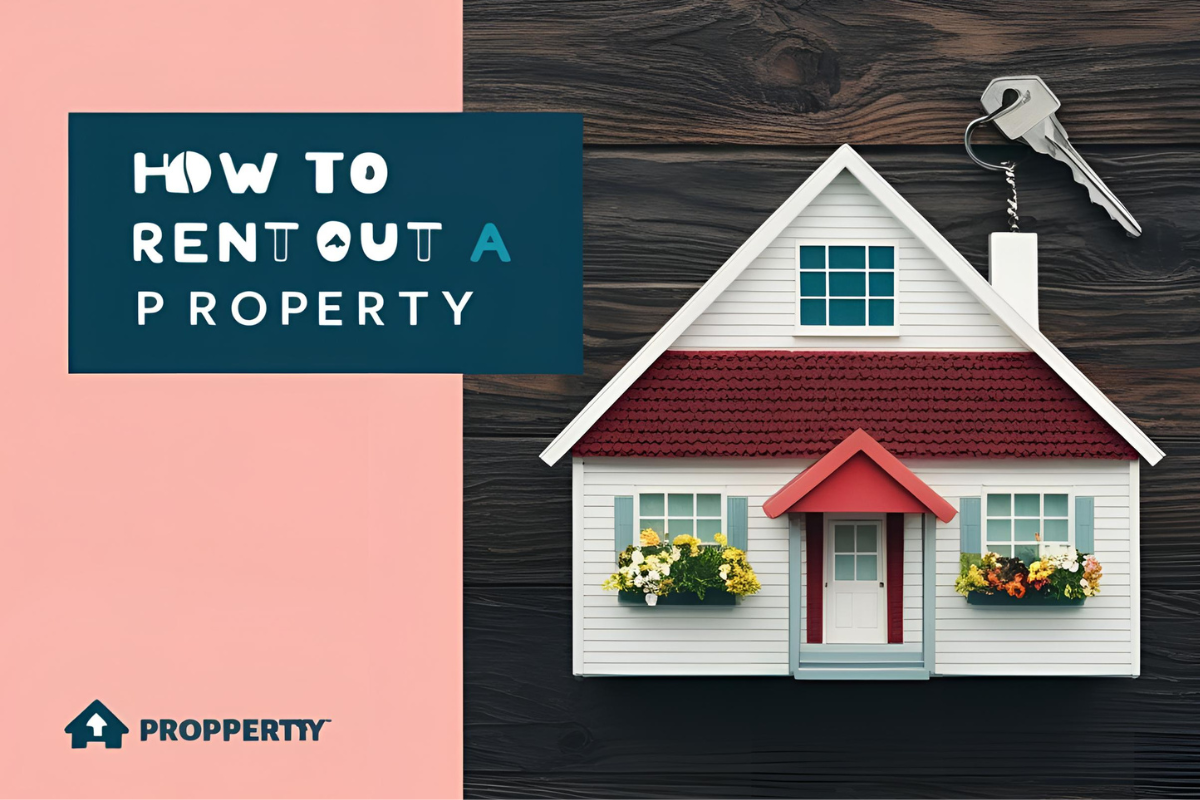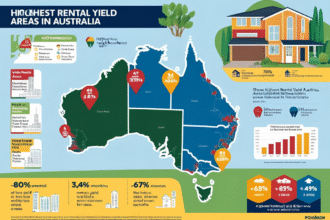Becoming a landlord can be a rewarding investment strategy, but it requires careful planning and execution. Whether you’re considering renting out your first property or looking to optimize your existing rental business, this comprehensive guide will walk you through every essential step of the property rental process.
From understanding legal requirements to finding quality tenants, we’ll cover the key strategies that successful landlords use to maximize their rental income while minimizing risks. By following these proven steps, you’ll be equipped to transform your property into a profitable rental asset.
Legal and Financial Preparation
Understanding Landlord-Tenant Laws and Responsibilities
Before listing your property, you must familiarize yourself with local landlord-tenant laws. These regulations vary significantly by location and govern everything from security deposits to eviction procedures.
Start by researching your area’s specific requirements for rent increases, notice periods, and tenant rights. Many jurisdictions require landlords to register with local authorities or obtain specific licenses before renting properties. Understanding these legal foundations protects you from costly disputes and ensures you operate within the law.
Meeting Property Standards and Obtaining Necessary Permissions
Your property must meet all building, health, and safety standards before welcoming tenants. This includes installing functioning smoke alarms, ensuring proper ventilation, and addressing any structural issues.
If you have a mortgage on the property, contact your lender immediately to secure permission for rental use. Most mortgage agreements require explicit consent before converting to a rental property. Additionally, check zoning laws to confirm your property is approved for rental use in your area.
Choosing a Business Structure and Securing Landlord Insurance
Decide whether to operate as a sole proprietor or establish a limited liability company (LLC) for your rental business. Each structure offers different tax implications and liability protections.
Standard homeowner’s insurance won’t cover rental activities. Secure comprehensive landlord insurance that protects against property damage, liability claims, and potential rent loss. This coverage is essential for protecting your investment and personal assets.
Property Preparation
Conducting Necessary Repairs and Upgrades
A well-maintained property attracts quality tenants and commands higher rent. Address all repair issues before listing, including plumbing problems, electrical concerns, and cosmetic improvements.
Consider upgrades that add value without breaking your budget. Fresh paint, updated fixtures, and energy-efficient appliances can significantly improve your property’s appeal. Remember that tenants are willing to pay premium rent for move-in ready properties.
Setting the Rent Rate and Payment Policies
Research comparable properties in your area to establish competitive rent pricing. Your rate should cover mortgage payments, taxes, insurance, maintenance costs, and provide reasonable profit margin.
Decide whether utilities will be included in the rent or paid separately by tenants. Clearly establish payment methods, due dates, and late fee policies. Many successful landlords offer slight discounts for early payment to encourage timely rent collection.
Creating an Appealing Property Listing
High-quality photographs and detailed descriptions are crucial for attracting potential tenants. Take photos during optimal lighting conditions and showcase each room’s best features.
Your listing should include essential details like rent amount, lease duration, pet policies, and neighborhood amenities. Use popular rental platforms where your target tenants are likely to search, and respond promptly to inquiries to maintain competitive advantage.
Tenant Screening and Selection
Developing a Tenant Screening Process
Establish consistent screening criteria that comply with fair housing laws. Create a standardized application that requests employment history, references, and consent for background checks.
Set clear income requirements, typically requiring tenants to earn at least three times the monthly rent. Document your screening process to ensure fair and legal tenant selection practices.
Background and Credit Checks
Comprehensive background checks reveal crucial information about potential tenants. Review credit scores, rental history, and any criminal background that might affect their tenancy.
Contact previous landlords to verify payment history and property care. Employment verification confirms income stability and reduces the risk of rent default. These steps require tenant consent and must comply with privacy regulations.
Interview Potential Tenants
Personal interviews help you assess whether candidates will be responsible tenants. Ask about their rental needs, lifestyle, and long-term plans to ensure good property fit.
Observe how candidates treat your property during viewings. Respectful, prepared applicants who ask thoughtful questions often make reliable tenants. Trust your instincts while maintaining objective, legal screening standards.
Lease Agreement and Move-In
Drafting a Comprehensive Lease Agreement
Your lease agreement serves as the foundation of your landlord-tenant relationship. Include essential terms such as rent amount, payment due dates, lease duration, and security deposit requirements.
Clearly outline tenant responsibilities for property maintenance, utility payments, and house rules. Specify procedures for repairs, lease renewals, and termination notices. Ensure your agreement complies with local laws and includes all statutorily required clauses.
Conducting a Move-In Inspection
Document your property’s condition before tenants move in by completing a detailed inventory with photographic evidence. Both parties should sign this document to prevent disputes over security deposit returns.
Walk through the property with your tenants, noting any existing damage or wear. This process protects both parties and establishes clear expectations for property care throughout the tenancy.
Property Management Best Practices
Routine Maintenance and Repairs
Proactive maintenance prevents small issues from becoming expensive problems. Schedule regular inspections and address maintenance requests promptly to keep tenants satisfied and protect your investment.
Establish relationships with reliable contractors for plumbing, electrical, and general repair needs. Quick response times to maintenance issues demonstrate professionalism and encourage lease renewals.
Effective Communication with Tenants
Maintain open, professional communication channels with your tenants. Respond to inquiries and concerns promptly, and provide clear contact information for emergencies.
Regular check-ins help identify potential issues early and show tenants you care about their experience. Good communication builds positive relationships that lead to longer tenancies and fewer vacancies.
Addressing Complaints and Disputes
Handle tenant complaints professionally and document all interactions. Address legitimate concerns quickly while maintaining firm boundaries on lease violations.
When disputes arise, refer to your lease agreement and local laws for guidance. Sometimes mediation services can help resolve conflicts without expensive legal proceedings.
Financial Management
Rent Collection Strategies
Establish clear rent collection procedures from day one. Offer multiple payment methods to make it convenient for tenants to pay on time.
Enforce late fees consistently and fairly. Consider offering small incentives for early payment to encourage prompt rent collection. Maintain detailed records of all payments and communications regarding rent.
Record Keeping and Tax Compliance
Maintain comprehensive records of all rental income and expenses for tax purposes. Track repair costs, maintenance expenses, and property improvements throughout the year.
Consult with a tax professional to understand deductions available to landlords and ensure compliance with tax obligations. Good record keeping simplifies tax preparation and protects you during audits.

Building Your Rental Success
Successful property rental requires dedication, preparation, and ongoing attention to legal requirements and tenant needs. Start with solid legal foundations, prepare your property thoroughly, and implement consistent screening and management practices.
Remember that being a landlord is both an investment strategy and a service business. Your success depends on providing quality housing while protecting your financial interests. Take time to educate yourself about local laws, build professional relationships with contractors and legal advisors, and always prioritize safety and compliance.
Consider joining local landlord associations for ongoing education and networking opportunities. These resources can help you stay current with changing regulations and learn from experienced property investors in your area.
1. What are the initial steps to renting out a property?
The first steps include ensuring your property complies with local laws and regulations, setting a competitive rental price, and preparing your property to be tenant-ready through necessary repairs and upgrades.
2. How do I screen potential tenants?
Screen potential tenants by running background and credit checks, verifying income, and contacting references. This process helps ensure you find reliable tenants who can pay rent on time.
3. Do I need landlord insurance?
Yes, landlord insurance is highly recommended. It provides coverage for property damage, liability issues, and potential loss of rental income due to unforeseen circumstances.
4. How much should I charge for rent?
Set the rental price by researching comparable properties in your area, considering location, amenities, and overall market demand. Tools like rental estimation calculators can also help.







